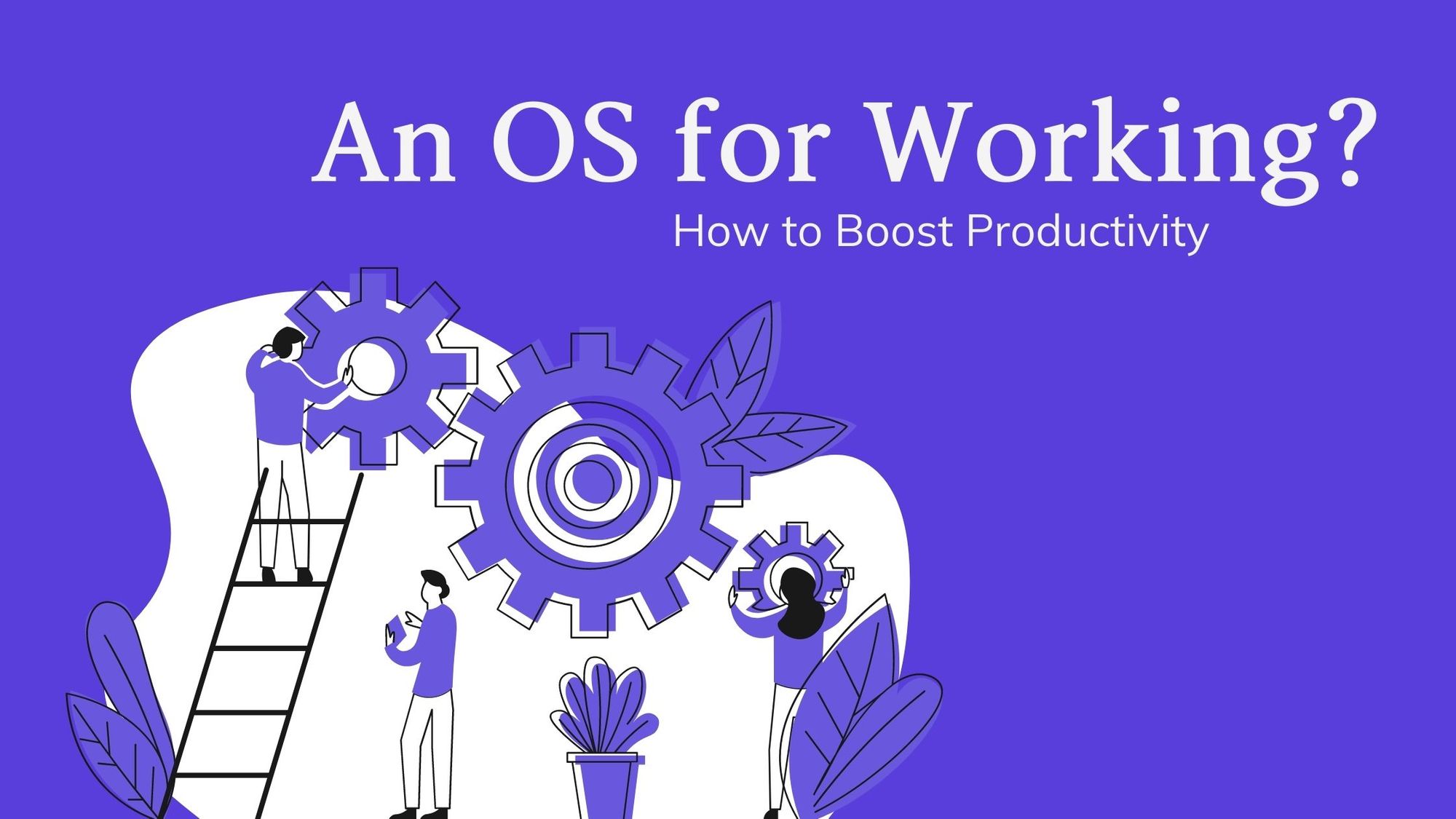Improving a team’s productivity is certainly on the wishlist for just about anyone you ask. However, the road to supercharging your team’s productivity may actually be more work than it will save, especially considering the fact that so many of us are now working from home or transitioning to a hybrid workplace model.
How can you navigate these environmental and cultural changes while maintaining an efficient and connected team?
We’d like to introduce you to a relatively new software category built for the future of work—the Work OS.
In this blog, you’ll get a crash course in Work OS features that will help your team become more productive and more collaborative with minimal effort.
What makes a productive team?
The good (and perhaps sour) news is that being a productive team is not something solely inherent. It requires intentional strategies, from hiring team members that work well together to distributing work effectively. Let’s explore a few best practices to support efficient and satisfied teams.
1 – Choose (or hire) a team that is prepared to collaborate
Most hiring managers would agree that hiring hard-working and fast-thinking individuals is a top priority. However, they should also look for informed candidates even in initial interviews.
88% of hiring managers say that an informed candidate is the top quality they want when interviewing, according to a recent survey from Glassdoor. Why? These candidates are typically engaged, collaborative individuals who think beyond themselves and their individual processes, making them better team players.
The same can be said in a situation in which a project manager needs to assemble a team from existing employees. When team members are excellent communicators and are able to understand goals with ease, they too contribute to the quality and swiftness of a project.
2 – Embody grateful and authentic leadership
While you might have imagined that the most efficient teams operate on very structured schedules, that simply isn’t the case.
Team members that feel they can bring their whole selves to work—and see the same quality in their leadership—feel more comfortable sharing their feedback, raising new ideas, and ultimately increase productivity through innovation.

Research by Deloitte reveals how while it’s important for employees to feel recognized for their contributions, a one-size-fits-all approach doesn’t actually work that well for everyone. Your Business Chemistry Type informs how you might like to receive gratitude, whether it’s new growth opportunities as opposed to a salary raise or praise from a direct supervisor. The after-effect of receiving a shout-out or “job well done” can really make an impact on productivity.
3 – Be absolutely transparent about goals, roles, and priorities
Productive teams are clear about where they’re headed, how to achieve their goals, and who will take on each task. Once a team establishes clear objectives, these should be repeated and referred to consistently, so the whole team is on the same page and stays focused to achieve the common goal.
Role clarity—the extent to which employees know what is expected of them in their tasks and responsibilities (and that of their colleagues)—can have a significant impact on productivity and performance. According to one study, employees with high role clarity report high levels of effectiveness, intention to stay, productivity, and satisfaction with leadership. It showed that the overall work performance of employees with high role clarity increased by 25%.
Number three of this transparency triple-threat relates to prioritization. Without it, your team can waste valuable energy on tasks that don’t make an impact or should be completed in a different order. The result? You guessed it—loss of productivity. It’s incredibly important for teams to routinely evaluate priorities as a part of effective project management and communication.
4 – Use the right tools
Productive teams know they can’t manage all of the information, files, and dependencies that go into their projects without the right tools to support them.
In order to possess the qualities we outlined above, they capitalize on solutions and technology that will give them every opportunity to streamline their workflows; that’s where the Work OS comes in.
What is a Work OS?
A Work OS (Work Operating System) is a digital, cloud-based workspace that enables teams to plan, execute, and manage all of their processes from day-to-day task management to large-scale projects.
Work OS platforms compliment productivity because in addition to being geared for organizations of all sizes and across all functions, they are flexible enough to build any workflow, project, or process you could possibly need or imagine.
How can a Work OS Boost Productivity?
A Work OS, like monday.com, is built to be a flexible, intuitive, and engaging platform for teams of all industries. A Work OS helps teams do their best work with several functions, such as integrations with the apps and tools they already use, automations to reduce manual tasks, and customizable timeline, Gantt chart, and calendar views.
Establish a single source of truth
With a Work OS, there’s no need for your teams to rely on email, Slack, Google Calendar, Dropbox, and more apps to get their work done. The Work OS brings all of these functions and more into one place, serving as the hub for file sharing, updates, data collection and reporting, and task assignment.
As a dynamic source of truth, this is where your teams can keep up with the most accurate and current work, so they won’t get lost between too many tools and endless email threads. You can also update statuses on any device and create and share customizable forms to send out to all stakeholders.
Communicate in context
Communicating through multiple platforms can get tricky. With a Work OS, you can easily tag colleagues and stakeholders directly on the task on a board to keep an organized, running update of discussions and approvals.
Need to efficiently gather information from your team or clients? Create and share a poll to get their feedback quickly in an organized fashion.
Celebrate team wins
Sending out a newsletter with a blurb to congratulate the work of an exceptional individual or team often lacks the extra “oomph” needed to make them feel valued. The message appears weaker when combined with other company updates; it may also get lost in threads with so many “reply all” comments, causing the reader to potentially miss their own shoutout.
A Work OS provides the option to create a dedicated space for such acknowledgments, and you can tag all members involved, a specific team all at once, or even just the person you’re thanking for their hard work. Colleagues can easily interact with likes, comments, and GIFS.
Creating the space for productive teams
Finding an intuitive and functional way to bring together different teams, priorities, and tools can be quite challenging.
The demand to produce quality projects in addition to supporting productive and happy team members can require just as much innovation and thoughtfulness as it does to implement an efficient framework for teams.
A Work OS is the secret weapon for productive teams that want to pair their dedicated and authentic spirits with a tool that supports transparency, swift collaboration, and easy adoption. And hey, it doesn’t hurt to have a fun way to give credit where credit is due.
Do you already use a Work OS? What’s your favorite functionality?
Guest post by Rachel Weaver, a Content Marketing Manager at monday.com. monday.com Work OS is a flexible platform where anyone can easily create or customize the solutions their team needs to run any aspect of their work.


